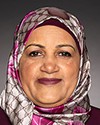Thank you very much, Mr. Chair. It's good to be back. I think I've been here a few times. It's always a pleasure. I'm very happy to be here with my officials.
I will make a few comments about the theme of your upcoming study on family reunification, and after that I'd be very happy to answer any questions you might have. I would like to give you a summary of the broad outlines of the program and also recent developments and changes we are planning to make. Then I'd be happy to take your questions.
Immigrants sponsored by family members make up one of three broad categories of immigrants within our system—the other two being economic immigrants and refugees.
Although economic immigration programs are responsible for the majority of newcomers who enter this country, the long-standing goal of reuniting families has been an important part of the history of Canada's immigration system, and it remains fundamental to that system.
Family class submissions can include spouses, partners, children, parents, or grandparents of the sponsor, and, in some limited cases, other family members.
Mr. Chair, from the mandate letter I received from the Prime Minister, and through subsequent announcements and actions, it is clear that we are placing a strong emphasis on family reunification. It might be said that especially our commitment on quicker processing time for immediate families, nuclear families, arguably is most important. It's a question of judgment. It's certainly one of the most important campaign commitments we made, and one on which we are very serious.
It's true, of course, that the refugee initiative got the lion's share of the media attention. It is very important, but if you go to the fundamentals of our system, the processing times for family class are also really important.
If you ask why we are welcoming new families, it's not just because we're kind, humanitarian people, because we think it's right that people should be reunited with their immediate families and should be able to bring their parents here. Hopefully we are that, but there's also a very economically important dimension to this. We are competing for strong immigrants with other countries around the world, with Australia, U.K., the United States. If we have strong immigrants we want to bring in and say, but you can't bring your family, or it will take you two years to bring your family, they may well go somewhere else.
It's not just a humanitarian gesture; it's also economic sense, in order to attract the so-called best and brightest. You're not going to attract them very well if you don't also allow them to bring their families in without substantial delay.
The other thing I would mention that's relevant for family class considerations—I perhaps have said this here before—is that I don't particularly like the term “economic immigrant”. It almost has the implication that the others are non-economic or have little economic value, and that is not true. The family class spouses generally do as well in the labour market as the spouses of economic immigrants. A significant fraction of the parents and grandparents are in the labour force. Even those who are not in the labour force among parents and grandparents facilitate the work of the mother and father by helping to look after the children. It's a question of degree. All immigrants make both economic and non-economic contributions. We want to give priority to family class, not just to benefit immigrants by allowing them to bring families, but also because it promotes a more successful immigration program for the country as a whole, for economic reasons as well as other reasons.
To that end, we have admitted more family class immigrants in 2016 than normal.
We have 80,000 admissions in the family class, including about 60,000 partners and children, and 20,000 parents and grandparents. How are we going to bring down processing times for families? We have three ways. We're admitting more family class immigrants. If you admit more, you run down the inventory more, and that helps to reduce the processing times. We've also put more money into the system, $25 million, to support family class immigrants. We're trying to become more efficient, as well, and this is partly through learning from our experience with the Syrian refugees. As you all know, we did it quickly, but I think we did it well in terms of health and security. How did we do it quickly and well? Well, we're looking at how we did it there, and we're importing some of those techniques into how we process family class and other categories of immigrants.
For example, we did things concurrently, instead of consecutively, and that speeds things up. If you do A and don't you start B until you complete A, and you don't start C until you complete B, it takes a lot longer than if you do A, B, and C all at the same time. The department has set up what they call “tiger teams”, groups of successful middle-level people who have worked in the system first-hand and who can bring new ideas and suggestions as to how to improve the process. So there are three ingredients to bringing down the processing times: higher levels of admission, more money, and more efficiency.
Through a combination of those things, we are reducing the inventory, the backlog of spouses, and I am hoping to be able to announce before the end of this year a substantial reduction in the processing times for spouses. However, we cannot make the announcement until we do the work to clear out the inventory, so that's why such an announcement is not immediate.
We increased the number of parents and grandparents who could apply each year from 5,000 to 10,000. We estimate that the inventory will be down to 46,000 by the end of 2016, from a peak of more than 165,000 in 2011. Those are big numbers, and that's going to make a big difference in how long it takes to admit the typical parent and grandparent from 165,000 in 2011 down to 46,000 by end of 2016. It's getting smaller, so those processing times will come down.
I will not say much more because I want to answer your questions, but let me just conclude by listing three other things we're in the process of doing. As we committed to in the election, we're going to give more points under express entry for siblings of Canadians. This is an idea I learned about in Vancouver. I think it's a good idea.
We're also going to raise the maximum age for dependent children from under 19 to under 22. We're also going to eliminate the conditional permanent residence measure for spouses and make them permanent residents on entry. Those last two are on their way. They require a regulatory process, so they're on their way to being gazetted, which I think is the term for consultation with Canadians, fairly soon. That regulatory process takes some time, even if it's something as simple as changing the age from 19 to 22. All I can say is that it's on the way to a process of consultation with Canadians in the not-to-distant future.
Thank you very much, Mr. Chair.
I would be happy to answer your questions.





